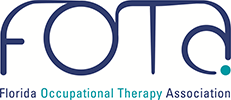 Improving Patient Safety in Occupational Therapy
Improving Patient Safety in Occupational Therapy
Anna DeMarco
Healthcare professionals must make clinical decisions regularly with their clients to provide quality care; however, there runs a risk for practitioners engaging in preventable medical errors such as administering an incorrect medication to a client due to practitioner negligence. In a recent legal trial, State of Tennessee v. RaDonda Vaught, a former nurse was found guilty of involvement in a fatal drug error and inevitably convicted of criminal negligent homicide and gross neglect of an impaired adult causing fatal death because of administering a powerful paralyzing drug, vecuronium, instead of a sedative, Versed (Kelman, 2022). Although this case concerns nursing professionals, other healthcare professionals, such as occupational therapy practitioners, can be at risk for engaging in medical errors within their scope of practice. Within the occupational therapy profession, medical errors may occur as a result of technical errors such as intervention methods, skills, or approaches that lead to physical harm, in addition to moral errors such as behaviors that raise concerns for ethical decision making that may undermine the practitioner-client relationship (Mu et al., 2011). Previous research reveals most occupational therapy medical errors occur during interventions that result in minor errors such as scratching a client due to long fingernails, in addition to, severe errors of burning a client’s skin due to leaving a hot pack on the skin for too long (Mu et al., 2011). Mu et al. (2011) suggests the frequency of medical errors was associated with interventions led by occupational therapy practitioners with minimal experience or inadequate knowledge. Notably, the occupational therapy profession is projected towards an employment growth rate of 12% from 2022 through 2032 which demonstrates a faster-than-average growth rate compared to all other occupations (Bureau of Labor Statistics, 2023). This statistic suggests there continues to be a need for occupational therapy practitioners; thus, it is imperative to identify strategies to prevent medical errors to provide safe practices for client safety.
In a recent matrix method study, researchers Moir, Turpin, and Copley (2021) investigated the perception of experiences that new occupational therapy graduates find challenging when providing direct client care. The authors identified 21 articles published between 1977 and 2020 from the United States, United Kingdom, Australia, New Zealand, Canada, and South Africa which utilized quantitative methods, qualitative methods, and mixed methods (Moir, Turpin, & Copley, 2021). The results of this study reveal common themes that new occupational therapy graduates struggle with including clinical reasoning and decision-making, knowledge and skills in practice, the context of service provision, and managing caseload and priorities (Moir, Turpin, & Copley, 2021). These struggles may hinder the new practitioner’s performance in providing quality care that may jeopardize patient safety. The implications of this study suggest newly graduated occupational therapy practitioners may not have access to workplace support; therefore, further research could explore personal and professional support strategies for occupational therapy graduates to manage the challenges of transitioning from student to practitioner (Moir, Turpin, & Copley, 2021).
Mu et al. (2011) conducted a focus group study to explore preventative strategies for occupational therapists to reduce medical errors and improve client safety. The focus group consisted of 34 occupational therapy participants with experience in geriatrics and physical rehabilitation located in Colorado, Nebraska, New York, and North Carolina. The researchers (Mu et al., 2011) of this study used semi-structured interview questions which included:
- Describe an event in a physical rehabilitation or geriatrics setting that you consider to be an occupational therapy practice error.
- In your opinion, what caused this error?
- What did you do afterward?
- What could you have done differently that could have prevented it happening?
- What discrete strategies have you used or have you seen others use to prevent or reduce practice errors?
These questions may be beneficial to use as a tool for healthcare professionals to utilize for self-reflection or hiring strategies. Subsequently, the researchers discovered the answers to these questions exhibited common themes for preventing medical errors and providing patient safety such as strengthening orientation guidelines or providing a mentor for new occupational therapy practitioners (Mu et al., 2011). Experienced occupational therapy practitioners may have the opportunity to provide educational resources and advice regarding patient safety strategies to help guide other occupational therapy practitioners such as identifying pertinent medical history and precautions upon assessing a client’s medical chart during the evaluation process. Rehabilitation facilities commonly receive new admissions for clients who require occupational therapy services; though, some clients may have extensive medical record charts with 100 pages of relevant medical history performed at the hospital before admission to the facility and it is our job to identify pertinent information such as imaging results, weight-bearing status, or precautions that may impact the treatment plan for occupational therapy. By identifying this information and communicating with the interdisciplinary team, practitioners may enhance the quality of care for clients to ensure safety and prevent medical errors.
Another theme the researchers (Mu et al., 2011) discovered is ensuring competency through performance competency checks. This suggests the administration of the facility may benefit from ensuring employees are competent in certain skills required to complete the required work in the specific setting. For example, knowledge of precautions and contraindications for medical conditions. Lastly, the researchers (Mu et al., 2011) found that advocating for the occupational therapy profession may be necessary for systemic change to enhance the prevention of medical errors such as reimbursement pressures or productivity pressures to ensure a high standard of professional education equipped with caring, ethical, and competent occupational therapy practitioners (Mu et al., 2011). As the occupational therapy profession continues to grow, new and experienced occupational therapy graduates must utilize various strategies that may help improve patient safety and prevent medical errors.
References
Bureau of Labor Statistics (2023). U.S. Department of Labor, Occupational Outlook Handbook, Occupational Therapists, at https://www.bls.gov/ooh/healthcare/occupational-therapists.htm
Kelman, B. (2022). Former nurse found guilty in accidental injection death of 75-year-old patient. NPR. https://www.npr.org/sections/health-shots/2022/03/25/1088902487/former-nurse-found-guilty-in-accidental-injection-death-of-75-year-old-patient
Moir, E., Turpin, M., & Copley, J. New Graduates' Experiences in Paediatric Private Practice: Learning to Make Intervention Decisions. Can J Occup Ther. 2022 Dec;89(4):395-405. doi: 10.1177/00084174221102716. Epub 2022 May 20. PMID: 35593096.
Mu, K., Lohman, H., Scheirton, L., Cochran, T., Coppard, B., & Kokesh, S. (2011) Improving Client Safety: Strategies to Prevent and Reduce Practice Errors in Occupational Therapy. American Journal of Occupational Therapy. Vol. 65(6), e69–e76. doi: https://doi.org/10.5014/ajot.2011.000562
